
How to Use MKE-S09 MQ-135 Air Quality Sensor: Examples, Pinouts, and Specs
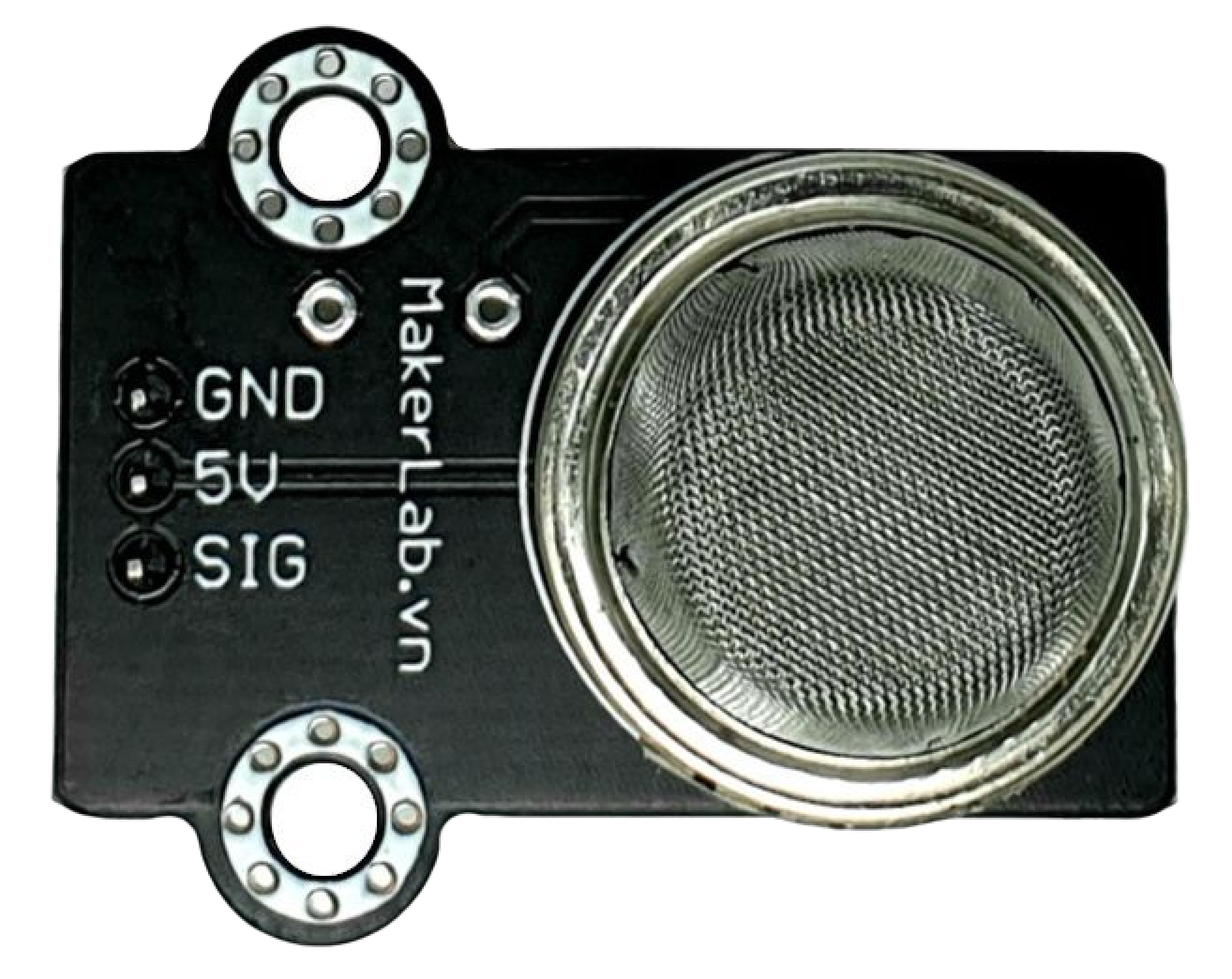
 Design with MKE-S09 MQ-135 Air Quality Sensor in Cirkit Designer
Design with MKE-S09 MQ-135 Air Quality Sensor in Cirkit DesignerIntroduction
The MKE-S09 MQ-135 Air Quality Sensor is an electronic device designed to detect a wide range of harmful gases in the environment. It is sensitive to gases such as ammonia, sulfide, benzene vapors, and others, making it an essential component for air quality monitoring systems, environmental safety applications, and gas leakage detectors. Its versatility allows it to be used in both industrial and residential settings to ensure the safety and well-being of individuals.
Explore Projects Built with MKE-S09 MQ-135 Air Quality Sensor
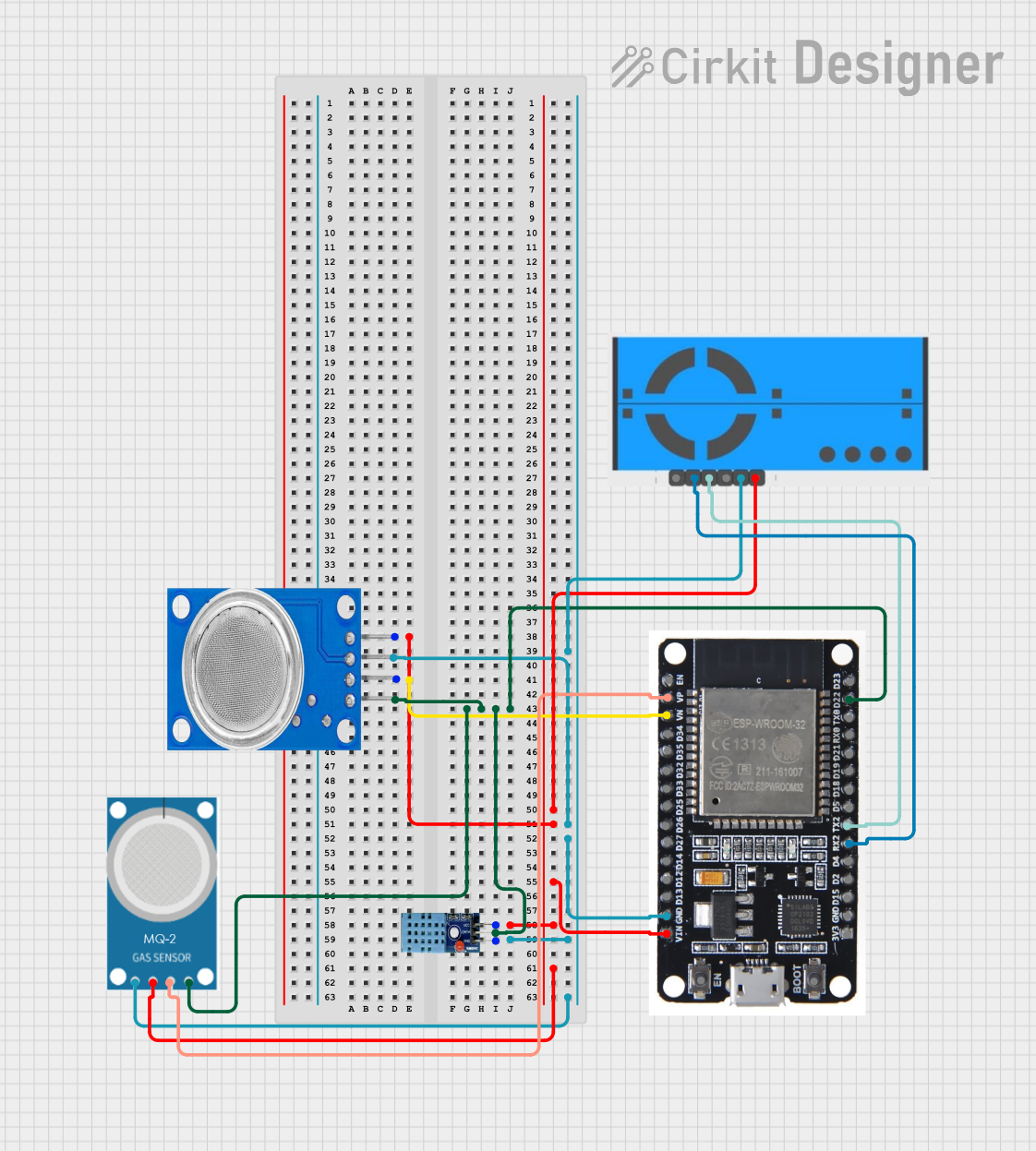
 Open Project in Cirkit Designer
Open Project in Cirkit Designer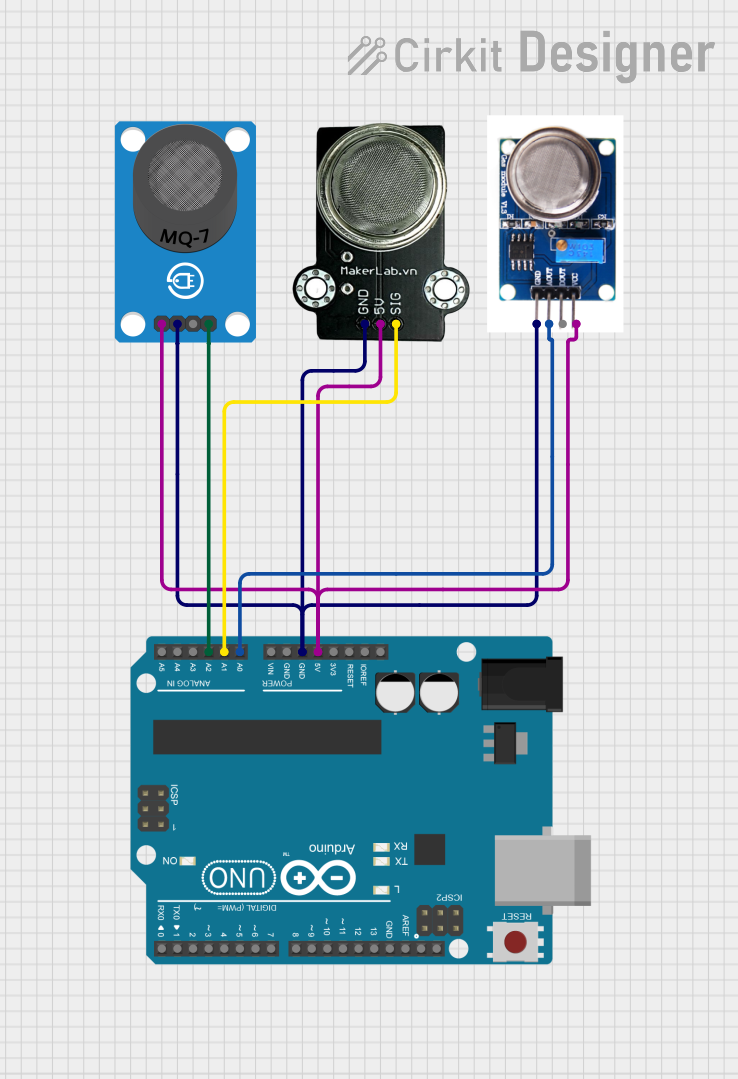
 Open Project in Cirkit Designer
Open Project in Cirkit Designer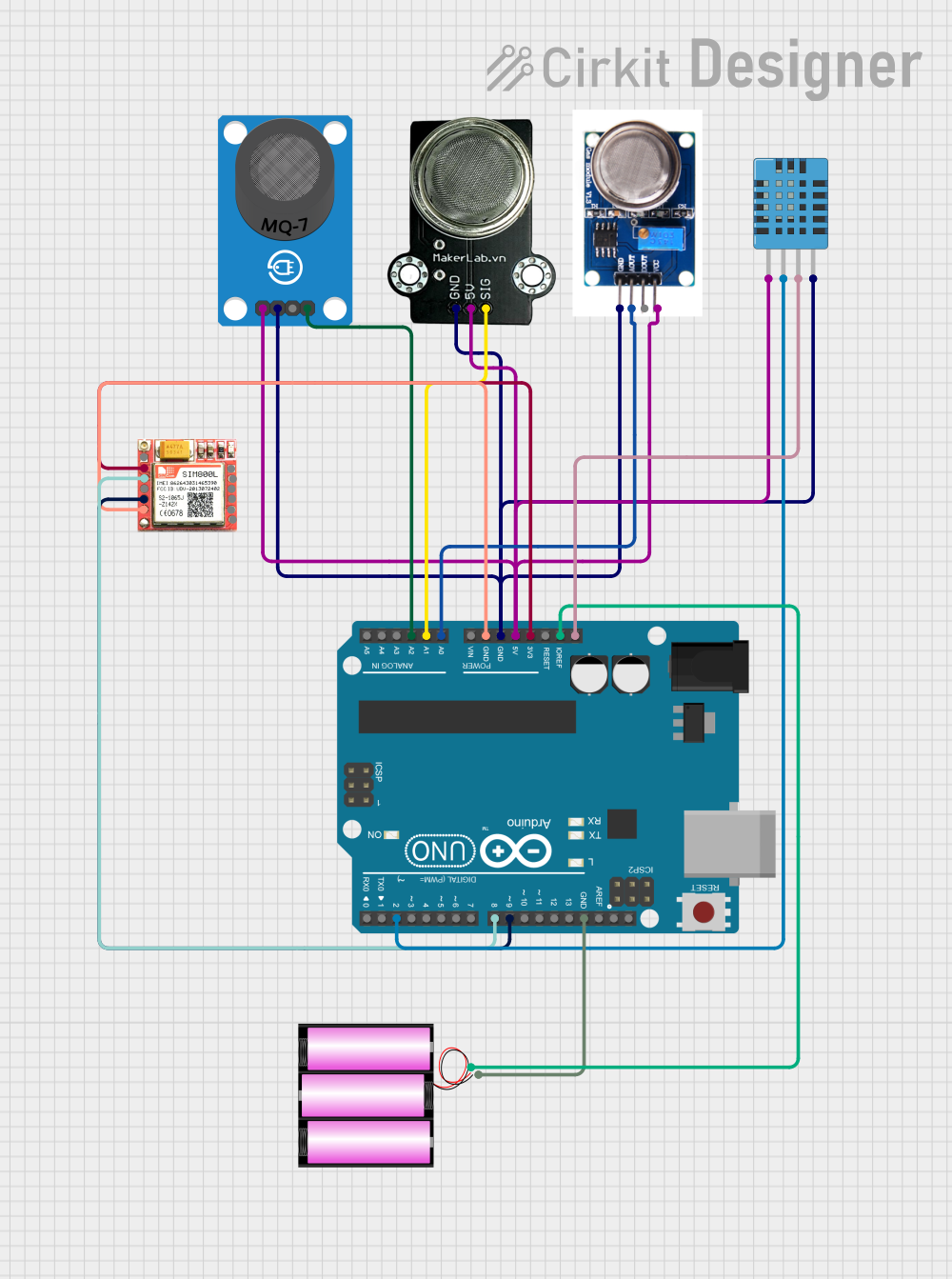
 Open Project in Cirkit Designer
Open Project in Cirkit Designer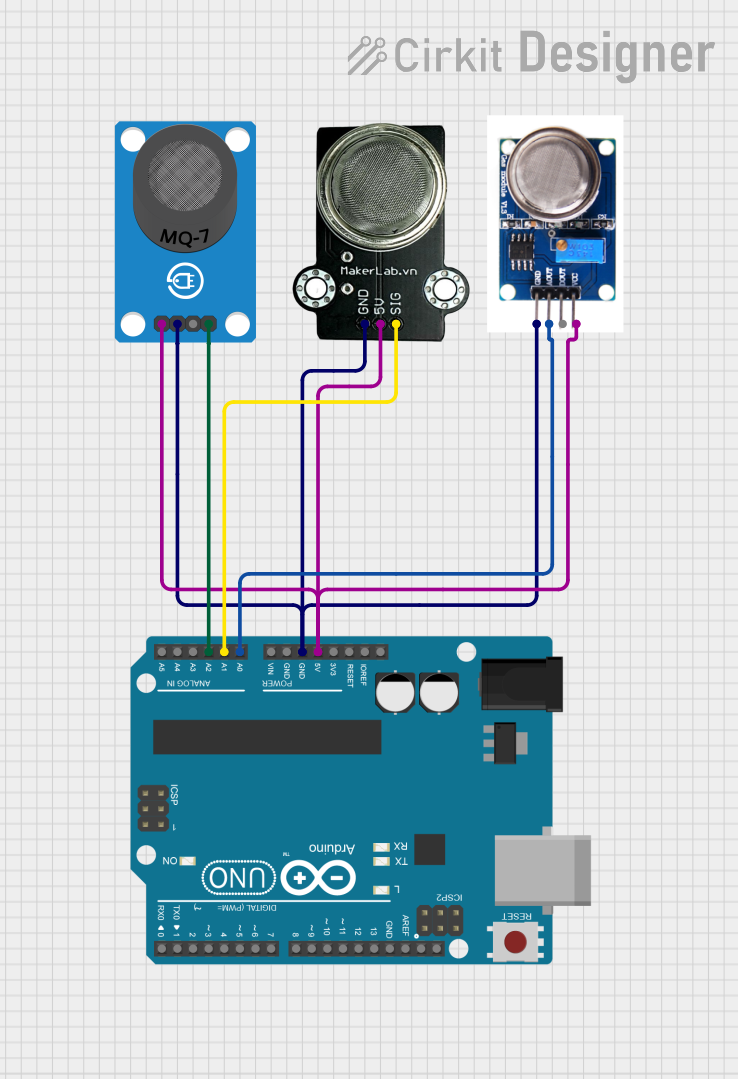
 Open Project in Cirkit Designer
Open Project in Cirkit DesignerExplore Projects Built with MKE-S09 MQ-135 Air Quality Sensor

 Open Project in Cirkit Designer
Open Project in Cirkit Designer
 Open Project in Cirkit Designer
Open Project in Cirkit Designer
 Open Project in Cirkit Designer
Open Project in Cirkit Designer
 Open Project in Cirkit Designer
Open Project in Cirkit DesignerTechnical Specifications
Key Technical Details
- Heating Voltage (Vh): 5.0V ± 0.1 AC or DC
- Working Voltage (Vc): 5.0V ± 0.1 DC
- Load Resistance (RL): Adjustable
- Heater Resistance (Rh): 31Ω ± 3Ω (at room temperature)
- Heating Consumption (Ph): ≤900mW
- Sensing Resistance (Rs): 30kΩ to 200kΩ (in 100ppm NH3)
- Preheat Duration: Over 24 hours recommended for initial use
Pin Configuration and Descriptions
| Pin Number | Pin Name | Description |
|---|---|---|
| 1 | VCC | Power supply (5V DC) |
| 2 | GND | Ground |
| 3 | DOUT | Digital output (TTL logic level) |
| 4 | AOUT | Analog output (Voltage proportional to gas concentration) |
Usage Instructions
Integration with a Circuit
- Power Supply: Connect the VCC pin to a 5V power source and the GND pin to the ground.
- Signal Output: The sensor provides both digital and analog outputs. Connect the DOUT pin to a digital input pin on your microcontroller if you wish to use the digital output. For the analog output, connect the AOUT pin to an analog input pin on your microcontroller.
- Load Resistance Adjustment: The RL on the board can be adjusted to calibrate the sensor for different gas concentrations or sensitivity requirements.
Best Practices
- Calibration: Calibrate the sensor for the specific gas and concentration range you intend to measure.
- Ventilation: Ensure proper ventilation around the sensor to allow for accurate gas detection.
- Temperature and Humidity: Be aware that the sensor's readings can be affected by temperature and humidity. Compensate for these factors if necessary.
- Safety: When dealing with harmful gases, always follow appropriate safety protocols.
Example Code for Arduino UNO
// MQ-135 Air Quality Sensor Example Code
// Connect the AOUT pin of the MQ-135 to A0 on the Arduino
int sensorPin = A0; // Select the input pin for the MQ-135
int sensorValue = 0; // Variable to store the sensor value
void setup() {
Serial.begin(9600); // Initialize serial communication at 9600 bits per second
}
void loop() {
sensorValue = analogRead(sensorPin); // Read the sensor value
Serial.print("Air Quality: ");
Serial.println(sensorValue); // Print the sensor value to the serial monitor
delay(1000); // Wait for a second to get stable readings
}
Troubleshooting and FAQs
Common Issues
- Inaccurate Readings: If the sensor is giving inaccurate readings, ensure that it has been preheated for over 24 hours and calibrated correctly.
- No Readings: Check the power supply and connections if the sensor is not providing any readings.
Solutions and Tips
- Preheating: Always preheat the sensor before using it for the first time or after a long period of inactivity.
- Calibration: Use a known gas concentration to calibrate the sensor for more accurate readings.
- Regular Testing: Periodically test the sensor with a known gas source to ensure it is functioning correctly.
FAQs
Q: How long does the sensor last? A: The lifespan of the sensor depends on the usage and the environment in which it is used. Typically, these sensors can last for several years with proper maintenance.
Q: Can the sensor detect carbon monoxide? A: The MQ-135 is primarily designed for detecting ammonia, sulfide, and benzene vapors. For carbon monoxide detection, a different sensor like the MQ-7 is recommended.
Q: Is the sensor waterproof? A: No, the MQ-135 sensor is not waterproof. Protect it from moisture and water exposure to prevent damage.
Q: How do I know if the sensor is working correctly? A: You can test the sensor by exposing it to a known gas concentration and observing the readings. If the readings are within the expected range, the sensor is likely functioning correctly.
For further assistance or inquiries, please contact the manufacturer or your local distributor.